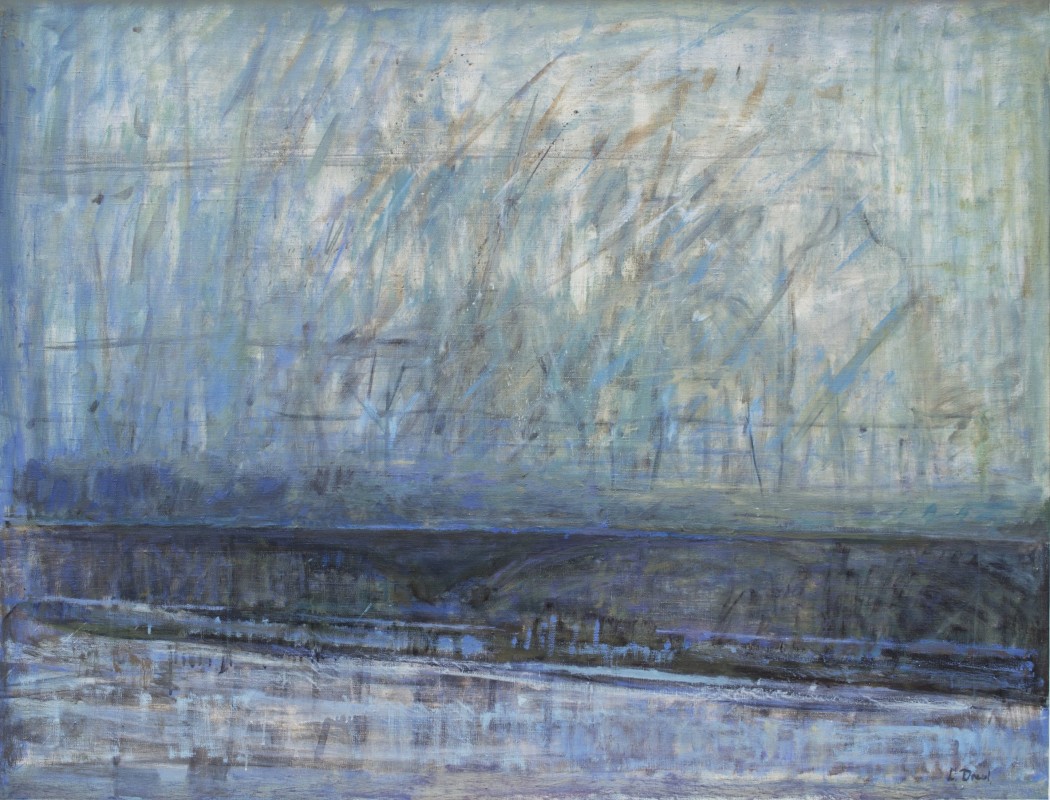Šančiai Barracks – an interesting place for painters. Creations of Laima Drazdauskaitė.
This block is most often referred to as the Šančiai Barracks, due to the typical red brick buildings, erected back in the 19th century. The place, nicknamed ‘military borough’, is quite clear, rectangular plan, buildings following each other in a clear order, just like in the military. Paradoxically, eventually a lot of Kaunas’ painters settled here, setting up their workshops on a block with such a militaristic history. Some locals have even renamed it the ‘painter borough’ already. Painters Aušra Andziulytė, Elena Balsiukaitė, Pranas Griušys, sculptor Evaldas Pauza and other artists have their workshops established here. Is it likely that someone reading this text knows one of the painters who lives and creates in the Šančiai Barracks or maybe even counts themselves among them.
Describing them all would take a while, therefore, this time, let’s meet Lithuanian painting classic Laima Drazdauskaitė, working nearby in her workshop. Nobody who knows the paintings of Laima Drazdauskaitė could say that her primary creative space is the block of Šančiai Barracks. Her paintings are not realistic landscapes of a city quarter with easily recognisable places. Quite the opposite – whirlpools, latitudes and whirlwinds of the misty outskirts of a forest swallow the urban and interior elements in her paintings, they transform into abstract hardly identifiable blots. The painter finds her own time and space in a real city, therefore, they become quite hard to trace.
Painter Drazdauskaitė enjoys making things talk. Being a visual poet, she is able to make the surface of an old wardrobe door, the top of a commode or a rusted ornament of a fence speak. And the elements of interior and exterior will represent the atmosphere of the place more subtly than the illustrative image.
The painter picked such specific talking object for her show “Emergency Exit” (“Meno parkas” gallery, 2017) a few years back, and the method of their portrayal was quite unexpected. One part of the exhibition was pictorial (painted creations, depicting an old object, a laconic motif of an interplay between several surfaces, etc.) and another consisted of things found by the artist. They can hardly even be called things, there was a piece of linoleum from a balcony floor or an old redundant mirror from a dormitory. By showing these noticed or picked objects, Drazdauskaitė seemingly tried to reveal the principles of alchemy creation – how things from environment transform from one matter into another, how found things can make you ponder expressive form, colour and idea, and how to focus on the environment meditatively. It seems the classic already has more than just painting at her command – the surface of old linoleum revealed the whole scale of earthy shades to an observer and the dormitory mirror, covered in stickers by the students, traversed its functional plane and into symbolic.
It does not seem like that big of a deal to bring a piece of old linoleum to suit your paintings, if provocation is the aim, you can do that as well. However, it has nothing to do with provocation, the painter simply wants to show the distance that a look travels, the power of focussed attention, the secrets of environment, hiding right there, under your feet.
Laima Drazdauskaitė does not create spontaneously, does not paint without deliberation: “I think, prepare for a long time, but it’s all done quickly from afterwards”. The painter enjoys working in her studio, where she can peacefully ponder images, ideas and thoughts from an older time. The study is kind of there for the artist due to a long creative process, precisely so one could eventually arrive at the word “enough”. The painter’s word “enough” is not easily achievable: “I observe nature and find a myriad of “events” that I then try to recreate in my painting. Things from my past and present intertwine there, and the immediate brush stroke, nuance of colour, perception of space capture the touches of me being here and now. I am interested in that, which lies beyond the limits of language, something hard to define or something entirely impossible to name”.
Laima Drazdauskaitė was born on 29 September, 1947 in Kaunas. Graduated from Kaunas Children’s Art School (now Art Gymnasium) in 1963. Graduated from the National Arts Institute in Vilnius (nowadays Vilnius Academy of Arts) in 1968. Was a painting and drawing teacher at Telšiai technical college of applied fine arts for a year by appointment (1968-1969). Returned to Kaunas and started working as a teacher (teacher-expert since 1996) at Kaunas Antanas Martinaitis School of Art from 1969. Member of Lithuanian Artists’ Association since 1978. Assistant at the VMU Faculty of Arts, 1993-2002. Painting instructor at the Kaunas Faculty of Vilnius Academy of Arts since 1996; professor of painting department.
The painter has received a grant from the Cultural Institute of Lippe District (Germany) in 1990; a grant from Soros Contemporary Art Centre in Lithuania in 1995 and 1997; Pollock-Krasner Foundation (USA) grant in 1997; highest national grant for culture and art creators of the Republic of Lithuania in 2001; Vantaa Artist Association (Finland) grant in 2004. Laima Drazdauskaitė has received several awards: diploma for originality, international watercolour exhibition, Klaipėda, 2005; Best work in ArtVilnius’13, Vilnius, 2013; golden pin from Lithuanian Artists’ Association, Vilnius, 2014; Kaunas Art Creators’ Association prize, 2017.
Laima Drazdauskaitė has done around 10 personal and almost 100 group shows. The painter is subtle and sensitive to the quality of light, i.e. always taking care whether there will be enough natural light at the exhibition and carefully picking where to take part and with who, thus this number of exhibitions is high. Her last anniversary exhibition “Emergency Exit” took place in the “Meno parkas” gallery in 2017. Her works have been acquired by the M. K. Čiurlionis National Museum of Art, National Gallery of Art, MO, etc.
Back to the map
